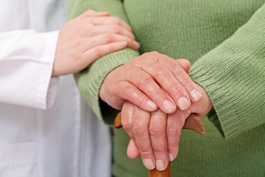 “What’s Different About Family Caregiving Today” is the title of a blog by Lynn Friss Feinberg of AARP.
“What’s Different About Family Caregiving Today” is the title of a blog by Lynn Friss Feinberg of AARP.
Ms. Feinberg tells us, “Only 41 percent of people born in 1900 survived to age 65. In sharp contrast, an estimated 84 percent of people born in 2010 will live to age 65 or older. In the past three decades, the population 90 years and older has nearly tripled. The majority of the very old have one or more disabilities and need supportive services. In addition, much care in the past was short term.”
This is the quote I most love: “Although recent research shows that 90 percent of unpaid caregiving for people 65 and older currently is provided by family members, we face a growing care gap. Reliance on families to provide care in the way it was delivered in the past is unsustainable.”
Demographics are shifting. “The share of U.S. adults who have never married is at a historic high. About 1 in 5 (20 percent) adults (25 and older) have never been married, up from 9 percent in 1960. Greater divorce among people 50 and older, and more remarriage (especially among older adults) may also affect patterns of family care in the future.”
Our nation is woefully unprepared for what is sure to be a deluge of people who will need long-term care, and who will be tragically unprepared for this.
The only way to make sure your last months or years are spent with comparable dignity and choice as you have now, is to buy long-term care insurance.






 Thanks for visiting my site! I like hearing from you!
Thanks for visiting my site! I like hearing from you!